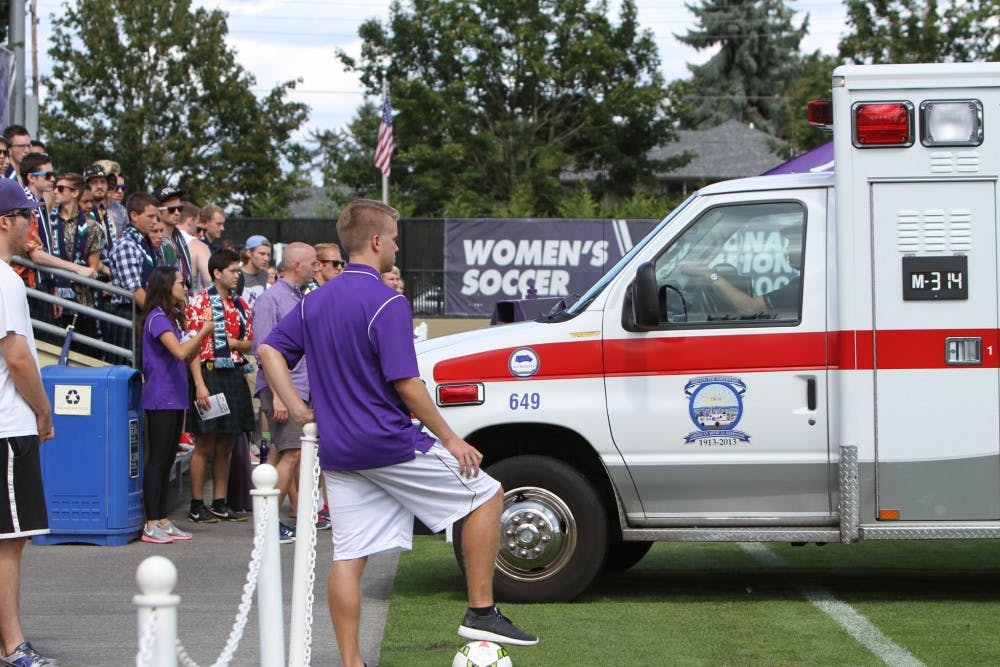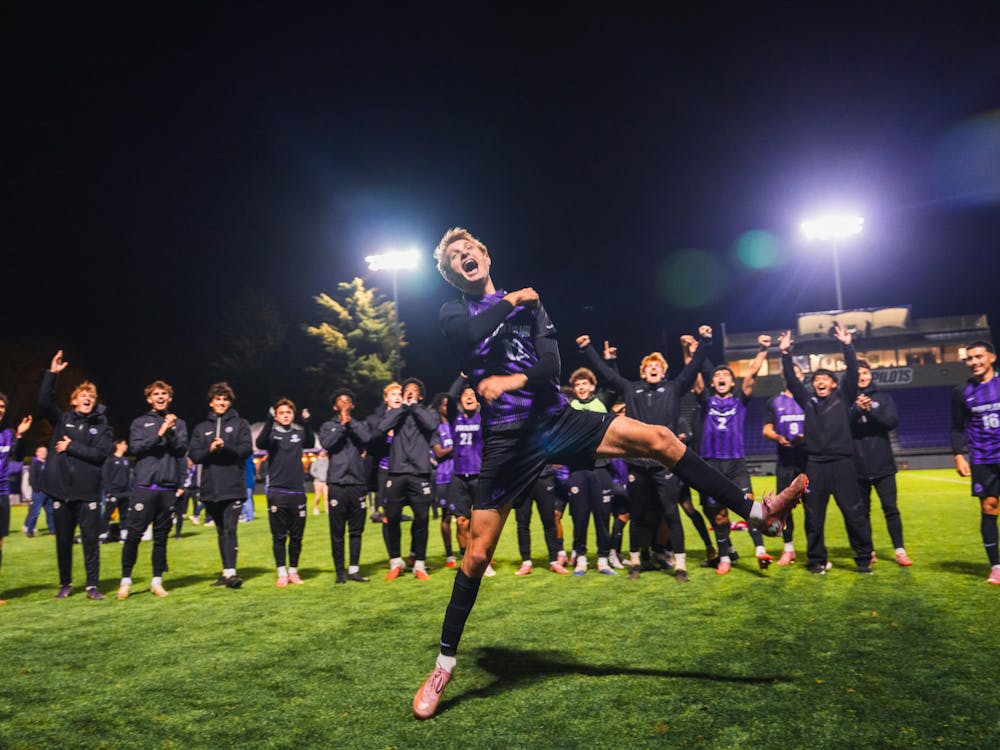By Malika Andrews |
The last thing freshman midfielder/forward Jacob Hanlin remembers before being knocked unconscious was his attempt to kick the ball down the sidelines during the game against Evansville on Sunday, Aug. 31. Hanlin was down for 17 minutes before he was taken off the field in an ambulance.
Hanlin is currently with his parents, whose travel and hotel expenses were paid for by the University, recovering from several wrist surgeries and a fractured skull. Hanlin's injury has caused administration to evaluate the safety of Merlo Field. The field's unusual width and concrete wall may place players at a higher risk for injuries like Hanlin's, according to Richard Bennett, director of sports medicine.
“I am thankful that I didn’t have to have any surgeries on my head,” Hanlin said. “I know when I fractured my skull I was bleeding a little bit towards my brain. With my wrist fracture, they had to go in and put some plates and screws in to make it so my wrist would grow correctly.”
Moments after Hanlin fell to the ground motionless, medical staff arrived at the scene.
“What I was most proud of was the response,” Bennett said. “I think the best decision Amber (Eubanks, assistant athletic trainer) made was stabilizing the head and neck, and not moving him. The decision to not move him, and activate EMS so quickly, and to leave him down could have been a life-changing, intelligent decision.”
Jared Robinson, the Evansville player who shoved Hanlin into the concrete wall near the benches while fighting him for the ball, earned a red card and a two game suspension for the late hit.
“Seeing your teammate get hit like that makes your blood boil,” sophomore teammate Thomas Peterson said.
Although Hanlin is recovering, the Merlo Field’s cement wall still poses a threat to athletes, Bennett said. He said he’d notified the administration of the wall’s potential hazards in 2009 when he was hired.
“It was something that was talked about when I first got here, something that head team physician and I alerted administration to,” Bennett said. “Initially it was just that we had not had an incident, that's what we were told, and so now that we have had one, work is in place trying to figure out the correct padding to pad that wall.”
Administration is now also considering narrowing Merlo Field. The field is 120-by-75 yards, making it one of the largest fields in the U.S. To be within NCAA regulation, fields cannot be wider than 80 yards nor narrower than 65. In length, a field must be no longer than 120 yards and no less than 110 yards.
Athletic Director Scott Leykam said athletics and administration is looking into temporary and permanent safety solutions for Merlo Field, and plans on having those solutions in place as soon as possible.
"The safety of our student-athletes, coaches, staff and spectators is very important to us at all competitions and practices," Leykam said in an email. "Any time an injury happens, we use it as an opportunity to review current safety measures to see if there are improvements we can make to lessen the odds of it happening in the future."
Bennett said coaches and administration will decide what changes will be made and when these changes will be taking place. Adding pads will be expensive, he said, but the athletics department hopes to have them up by the next home game.
“There have been a couple catastrophic instances since I have been here, and I would call this one of them,” Bennett said. “I am very proud of everyone involved and what they did to make this situation the best that it could be.”
Malika Andrews is the sports reporter for The Beacon. She can be reached at andrewsm17@up.edu or on Twitter @malika_andrews.








